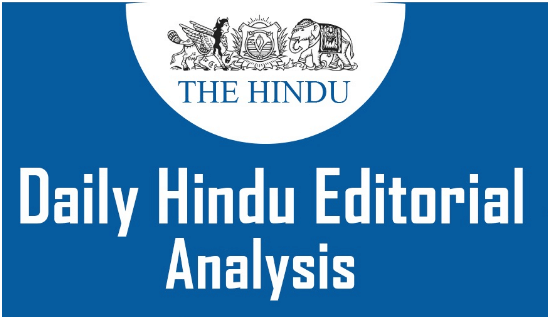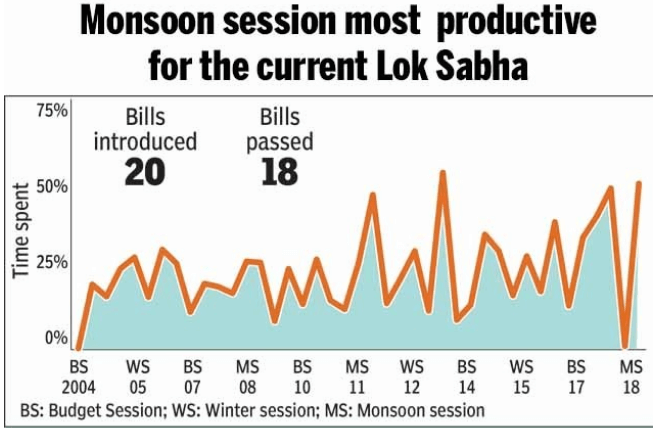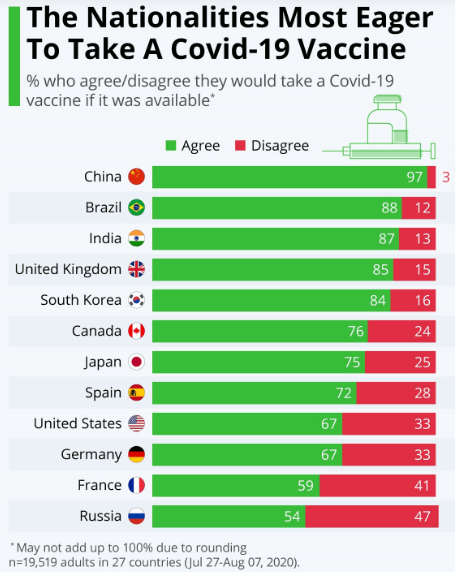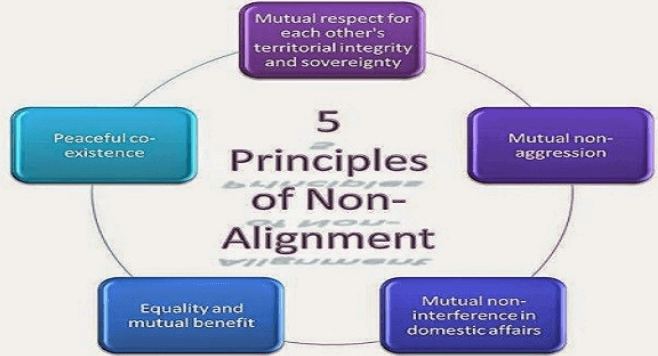The Hindu Editorial Analysis- 9th Sept, 2020 | Additional Study Material for UPSC PDF Download

1. SAFE SESSION: ON MONSOON SESSION OF PARLIAMENT-
GS 2- Parliament and State Legislatures – structure, functioning, conduct of business, powers & privileges and issues arising out of these
Context
The Parliament session, from September 14, will see many firsts.


A New Normal?
(i) The Lok Sabha and the Rajya Sabha will alternate their sittings so that members can spread over both chambers to ensure physical distancing necessitated by the COVID-19 pandemic. Even the visitor galleries will be occupied by the MPs.
(ii) There will be 18 sittings without any weekend break or holiday. The break, between 1 p.m. and 3 p.m., would be used to disinfect the chambers.
(iii) The presiding officers of both Houses have had trial runs, but it will be a tough act for them and the MPs — who are used to huddling together and speaking aloud — to deliberate across two chambers and keeping a safe distance from one another.
(iv) There will be no Question Hour, though members can get written answers to written questions.
(v) The Zero Hour, where any member can raise issues of urgent national importance, will not be an hour, but only 30 minutes.
(vi) The Opposition has gone quiet on these changes in parliamentary modalities after some initial objections.
(vii) Recently, the Assemblies of Opposition-ruled States, Kerala, Rajasthan, Punjab and West Bengal, met and none of them had a Question Hour.
Accountability
(i) The executive branch has expanded its power globally, in the wake of the pandemic, and not rarely, using it as a facade for aggrandisement(increasing power).
(ii) The attenuation(reduction of effect) of Parliament, overshadowed by a strong executive, has been a concern in India even before the pandemic.
(iii) In ensuring executive accountability and voicing people’s concerns, Parliament’s role was found wanting.
(iv) In lawmaking, it was increasingly being railroaded by the executive. These unhealthy trends appear to have been accelerated by the pandemic.
(v) The government must be held accountable by Parliament on the management of the pandemic, but that is not all.
(vi) There is a long list of issues that requires detailed attention and deliberation by people’s representatives.
(vii) China’s aggression on the LAC, the challenges on the economic front, the Centre’s refusal to meet its commitment to States under the GST regime, the coming election in Bihar in the midst of the pandemic, the situation in Jammu and Kashmir, and worsening ties with India’s neighbours.
(viii) The Congress has been combative on these issues while the government has not been very responsive.
(ix) Regional parties in power appear too overwhelmed by the pandemic to pay attention to other issues.
(x) The government has 11 Bills to replace ordinances.
(xi) The Bill to replace Taxation and Other Laws (Relaxation of Certain Provisions) Ordinance, 2020, which will seek to amend the Income Tax Act to enable 100% deduction to donations made to the PM CARES Fund, is a controversial one among them.
(xii) The Opposition and the government must work together to turn the session into an opportunity to share views on all these questions, and present a united, reassuring front before the country.
Conclusion
Parliament not only needs more space during a pandemic, but also more time.
2. VACCINE FOR ALL: ON COVID-19 VACCINE POLICY-
GS 2- Issues relating to development and management of Social Sector/Services relating to Health
Context
(i) The race to a vaccine is a relay — at every stage, there are people passing on the baton, and it’s the government’s responsibility to grasp it at the last mile.
(ii) Whether or not a vaccine for COVID-19 is around the corner(near), it is imperative(need) that a vaccine policy is formulated for India, ensuring parity of access for all.

Prioritise Vaccination
(i) As several vaccine efforts are progressing at varying paces, globally, concerns about access to a vaccine in the future have crept(got) into the narrative.
(ii) WHO Director General Tedros Adhanom Ghebreyesus recently spoke of the need to use a vaccine, when it becomes available, effectively.
(iii) He also indicated the need to prioritise vaccination for some in the initial stages, while in time, as production increases, people everywhere should get it.
(iv) In the initial stages, global health leaders have been advancing the vaccine for essential workers and those at risk including senior citizens and those with co-morbidities.
(v) As Dr. Tedros said, “some people in all countries, rather than all people in some countries”, should have access to the vaccine in the early phase.
(vi) Even in this initial stage, the government should make the vaccine available free of cost to those who cannot pay, or at affordable rates.
(vii) As production kicks off, initial production costs are likely to be high, even astronomical, and it is the duty of governments to cushion the cost.
(viii) Once the economies of scale begin to kick in, it is likely that the prices are driven down and become more affordable.
(ix) Besides being a moral and ethical imperative, it will also make economic sense to make sure the vaccine is eventually available to all.
(x) Leaving gaps in the delivery of the vaccine will only serve to allow the virus to survive, and continue to wreak(harm) further damage.
Mammoth Task
(i) India has a fairly reliable vaccine delivery system for children, as part of the universal immunisation programme.
(ii) It may be assumed that the knowledge and wherewithal to run a full-scale vaccination programme rests with the health administration — both at the central and the State level.
(iii) However, in terms of scope, this is far wider; in fact, a mammoth(huge) task. All people in the country must have access to the vaccine, and, if necessary, periodic doses of it.
(iv) Indeed, the mobilisation for this task in India should be nothing short of heroic, as and when the vaccine is available here.
(v) Meanwhile, the government must get its act together on developing a policy specific to the COVID-19 vaccine; from preparing resources — both material and human — for the manufacture, storage, distribution and delivery.
(vi) This includes taking sensitive, but firm, decisions guided by evidence, on who will receive the vaccine, how, when and where.
(vii) Putting down a standard operating protocol for every stage of the vaccine will serve the government well when the baton(charge) is finally passed on to it.
Conclusion
India needs a COVID-19 vaccine policy that ensures total coverage in logical phases.
3. WHAT IS IN A NAM AND INDIA’S ALIGNMENT-
GS 2- Important International institutions, agencies and fora, their structure, mandate
Context
(i) India’s External Affairs Minister, said recently that non-alignment was a concept of relevance in a specific era and a particular context, though the independence of action enshrined in it remains a factor of continuity in India’s foreign policy.
(ii) This is about as explicit an assertion as one is likely to get from our political leadership of an obvious post-Cold War fact: that non-alignment, as a foreign policy concept, is dead.

United By A Campaign
(i) Non-alignment was a policy fashioned during the Cold War, to retain an autonomy of policy (not equidistance) between two politico-military blocs(US and USSR).
(ii) The Non-Aligned Movement (NAM) provided a platform for newly independent developing nations to join together to protect this autonomy.
(iii) It was a disparate group broadly united around NAM’s flagship campaigns for de-colonisation, universal nuclear disarmament and against apartheid(hatred towards black).
(iv) One of the blocs(USSR) was disbanded at the end of the Cold War.
(v) De-colonisation was largely complete by then, the apartheid regime in South Africa was being dismantled(ended) and the campaign for universal nuclear disarmament was going nowhere.
(vi) Freed from the shackles of the Cold War, the NAM countries were able to diversify their network of relationships across the erstwhile east-west divide. Non-alignment lost its relevance, and NAM its original raison d’être(reason for existence).
(vii) For a few years now, non-alignment has not been projected by our policymakers as a tenet(principle) of India’s foreign policy.
(viii) However, we have not yet found a universally accepted successor as a signature tune for our foreign policy.
(ix) Successive formulations have been coined and rejected. Strategic autonomy was one, which soon acquired a connotation similar to non-alignment, with an anti-U.S. tint.
(x) Multi-alignment has not found universal favour, since (as the External Affairs Minister said elsewhere) it may convey the impression of opportunism, whereas we seek strategic convergences.
(xi) Seeking issue-based partnerships or coalitions is a description that has not stuck.
(xii) “Advancing prosperity and influence” was a description Dr. Jaishankar settled for, to describe the aspirations that our network of international partnerships seeks to further.
China Factor
(i) In the wake of the current stand-off with China, there have been calls for India’s foreign policy to shed its inhibitions and make a decisive shift towards the United States, as the only viable option to counter China.
(ii) The government has been more nuanced in its approach. The External Affairs Minister clarified that a rejection of non-alignment does not mean a rush to alignment: India will not join an alliance system.
(iii) The fact is that ‘alliance’ is as much a Cold War concept as non-alignment.
(iv) During the Cold War, the glue that held countries of an alliance together was composed (in varying proportions) of ideological convergence and an existential military threat.
(v) With the disintegration of the Union of Soviet Socialist Republics (USSR) and the Warsaw Pact, this glue dissolved and the international options of alliance partners widened, just like those of NAM countries.
(vi) The strategic interests of alliance partners are no longer congruent.
(vii) This is evident in the Euro-Atlantic alliance.
(viii) U.S. President’s words and deeds have highlighted divergences within the North Atlantic Treaty Organization, and even widened them, but strains have periodically surfaced even earlier — over the 2003 U.S. invasion of Iraq, for example, or on policy towards Russia or West Asia.
(ix) Turkey is constantly exploring the limits of NATO discipline.
(x) Alliances in the Asia-Pacific face a bigger definitional dilemma. They were originally forged to deter the USSR.
(xi) The threat to the alliance partners today is from an assertive China, which they are reluctant to define as a strategic adversary(enemy), because of their economic engagement with it and the huge military asymmetry.
Geography Link
(i) It is often overlooked that geostrategy derives from both geography and politics. While politics is dynamic, geography is immutable(fixed).
(ii) Two major imperatives(requirements) flow from India’s geography: economic and security interests in the Indo-Pacific space and the strategic importance of the continental landmass to its north and west.
(iii) The former has inspired the Act East policy of bilateral and multilateral engagements in Southeast Asia and East Asia and the Pacific.
(iv) Shared India-U.S. interests in dealing with the challenge from China in the maritime domain have been a strategic underpinning of the bilateral partnership since the early 2000s.
(v) In the immediate-term, Indian and U.S. perspectives are less convergent in India’s continental neighbourhood.
(vi) Connectivity and cooperation with Afghanistan and Central Asia need engagement with Iran and Russia, as well as with the Russia-China dynamics in the region.
(vii) Russia bestrides(dominates) the Eurasian landmass bordering India’s near and extended neighbourhood.
(viii) Seemingly paradoxically, a close Russia-China partnership should move India to broad-base relations with Russia (beyond the traditional defence and energy pillars).
(ix) A strong stake in relations with India could reinforce Russia’s reluctance (which still persists) to be a junior partner of China.
(x) As the U.S. confronts the challenge to its dominance from China, classical balance of power considerations would dictate a modicum of accommodation with Russia.
(xi) The political lessons from the current pandemic could help reawaken that historical memory.
(xii) Equally, the U.S. could acknowledge that India’s development of trade routes through Iran would also serve its strategic interest of finding routes to Afghanistan and Central Asia, bypassing Pakistan and Russia, respectively.
Conclusion
(i) Five years ago, a group of U.S. strategic analysts had suggested that the U.S. should see ties with India as a joint venture (not an alliance), in which they could pursue shared objectives to mutual benefit and accept that differences of perspectives will have to be addressed.
(ii) This template could have wider applicability for bilateral relations in today’s world order, which former National Security Adviser Shivshankar Menon has described as militarily unipolar, economically multipolar and politically confused.
(iii) COVID-19 may scramble(hurt) the economics and deepen the confusion further.
(iv) India will acquire a larger global profile next year, when it commences(starts) a two-year term on the UN Security Council.
(v) The strategic choices that it makes in its bilateral partnerships will be closely watched.
|
21 videos|562 docs|160 tests
|
FAQs on The Hindu Editorial Analysis- 9th Sept, 2020 - Additional Study Material for UPSC
| 1. What is the significance of the UPSC exam? |  |
| 2. What are the eligibility criteria for the UPSC exam? |  |
| 3. What is the selection process for the UPSC exam? |  |
| 4. How can I prepare for the UPSC exam effectively? |  |
| 5. What are the career prospects after clearing the UPSC exam? |  |
















